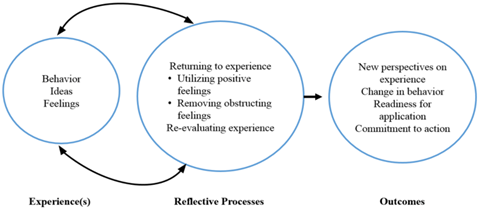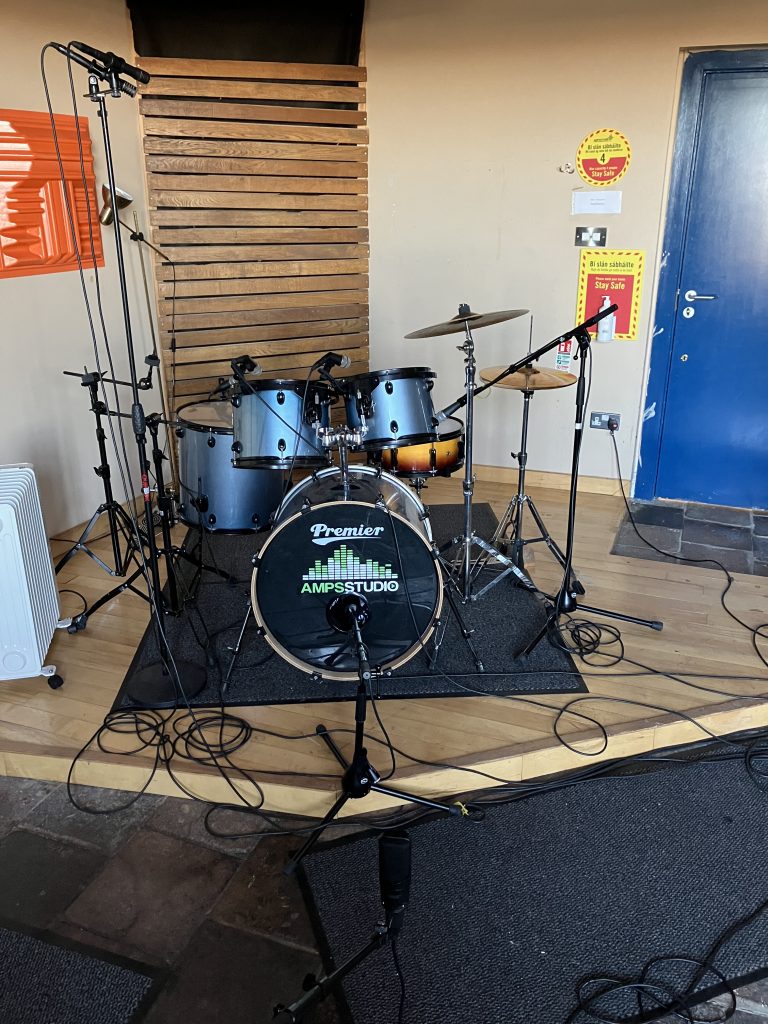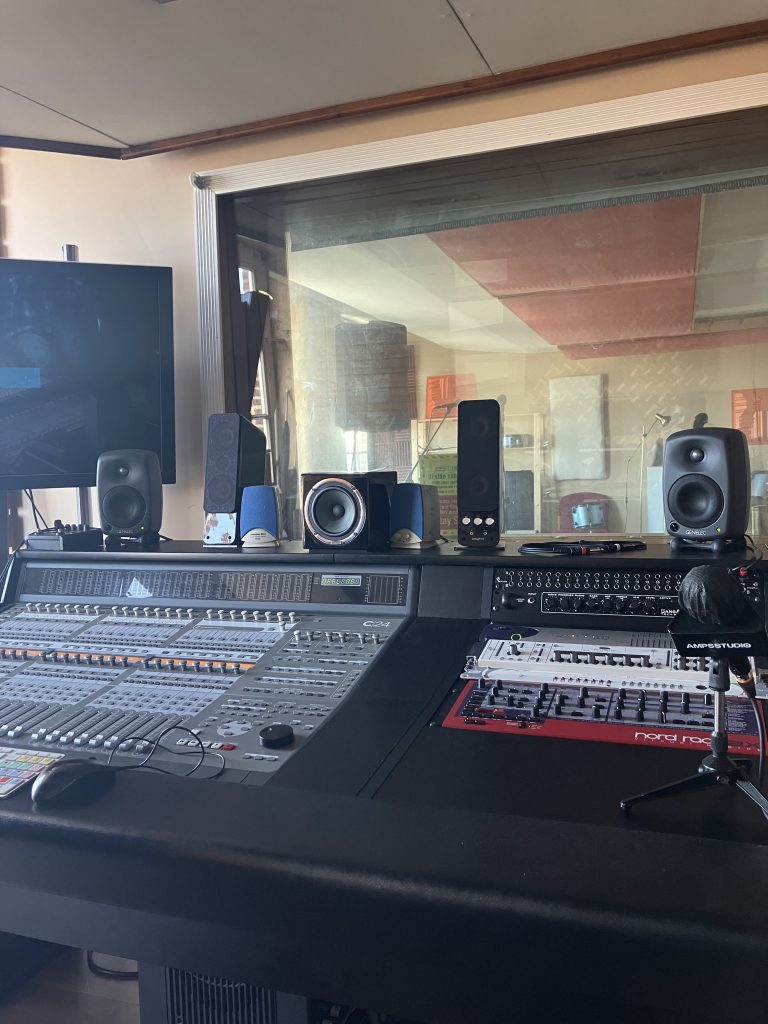The View from the Control Room: Humble Beginnings
As I was approaching the end of my placement with Amps studio, I had undergone much training and professional practice in sound recording, editing, and mixing, and was ready to take on my first independent recording session with a full band. “Kippax”, a newly formed four-piece from Dublin, had asked me to engineer a session for them, with the aim of recording a demo single. In this blog, I will use the Boud model to systematically reflect on my experience of conducting the recording session.

The band consisted of two guitarists, a vocalist, and a drummer, so I had an idea of what to expect. I prepared the day before the session by setting up some microphones, which would free up time for other activities. I had also received a demo recording of the track to be recorded, and a couple of reference tracks. My first mistake, at this stage, was having overlooked the fact that the song contained tempo changes, which would later have a negative impact on the workflow of the session. Looking back, I realise that I was preoccupied with many of the finer details regarding the session and had missed something significant as a result. Going forward, I intend to immediately make note of such details and ask the client if they have taken them into account, making appropriate recommendations if not.

On the day of the session, my management of time was not ideal. I had agreed to meet the members of the band in the city centre and show them the way to the studio, but in doing so we arrived late, causing me to feel rushed for the remainder of the session. This compounded with the fact that I was running the whole session independently and doing so for the first time in this environment, causing me to feel quite overwhelmed. In the future, I will make sure to always arrive early and let the client know that it is their duty to find the location, having given them clear directions.
It was my duty as a sound engineer to inspire confidence in the artists throughout the session, so I needed to appear confident and be certain in my decisions. I often felt uncertain of how to best manage the session, feeling overwhelmed with keeping track of several activities and several people simultaneously. This is why it is vital to have strong skills in communication, time management, organisation, and other interpersonal skills, as Dittmar (2012) notes, and is something that I need to work on in my future endeavours.
In terms of the recording method, the band had expressed an interest in tracking each member separately. Looking back, I should have realised that a live performance would have suited this situation better, for a number of reasons. The song contained tempo changes, and the band did not adjust well when playing to a click track of one tempo. They were less experienced with studio recording in general, and clearly were more confident when performing together. Eventually, I realised it would be better to record a live-performance, but wasted a lot of time and effort attempting the former method. Having gained this experience, I have learnt that it is crucial to analyse all the factors before committing to a particular method of recording: making quick judgments with confidence leads to an efficient, productive workflow.

I had also missed the opportunity to do much adjusting of the microphone positions, which I later felt would have been beneficial, especially regarding the drums. There are numerous factors that determine the quality of a recording, including microphone choice and placement (Miles Huber & Runstein, 2018), which were the main factors under my control at the time. I was quite impressed with the sound of the drums within the live space, and had only later realised that the quality of the recording was subpar. Part of this was due to the fact that I was listening through monitoring speakers in the control room, and was still hearing a lot of sound bleeding through from the live room. A better strategy would have been to listen to the recording on closed-back headphones, which would have blocked the external noise and allowed me to hear the recording more faithfully. Experimenting with simpler microphone arrangements, as suggested by (Rogers, 2021), could also have been effective.

Recording vocals turned out more successfully. The performance was excellent, and was done as an overdub to the instrumental live performance. This allowed us to make use of a vocal booth, a Neumann condenser microphone, and a high quality microphone preamp. I had also taken care to thoroughly test the signal chain before recording, setting the correct gain levels to ensure an appropriate signal level. All of these factors must be considered, following the “good rule” of recording (Miles Huber & Runstein, 2018), whereby the quality of a recording is only as good as the weakest link in the chain. Having succeeded on that occasion, I must make an effort to apply the same principles to every part of a recording session.
To conclude: there are often several challenges that must be addressed when it comes to recording different instruments, and different musicians of different skill levels. Managing several people as well as managing your own time is a demanding task that requires having good interpersonal and organisation skills. Making timely decisions with confidence can often be difficult, but becomes easier with more experience.
Bibliography
Boud, D., Keogh, R. & Walker, D., 1985. Promoting Reflection in Learning: A Model. In: Reflection: Turning Experience into Learning. Oxon: Routledge, pp. 18-40.
Dittmar, T., 2012. Chapter 4 – People Skills. In: Audio Engineering 101. Oxon: Focal Press.
Miles Huber, D. & Runstein, R. E., 2018. Chapter 4 – Microphones: Design and Application. In: Modern Recording Techniques. 9th edition. New York; London: Routledge.
Rogers, N., 2021. Recording Drum Kits With Only Two Mics. [Online]
Available at: https://www.soundonsound.com/techniques/recording-drum-kits-only-two-mics
[Accessed 12 April 2023].
Practice makes Perfect
You May Also Like

Interview a New You! – Becoming an Interview Guru
24 February 2023
“Fake it ‘til you make it!”: Finding Success in a Simulated Interview
22 February 2023
